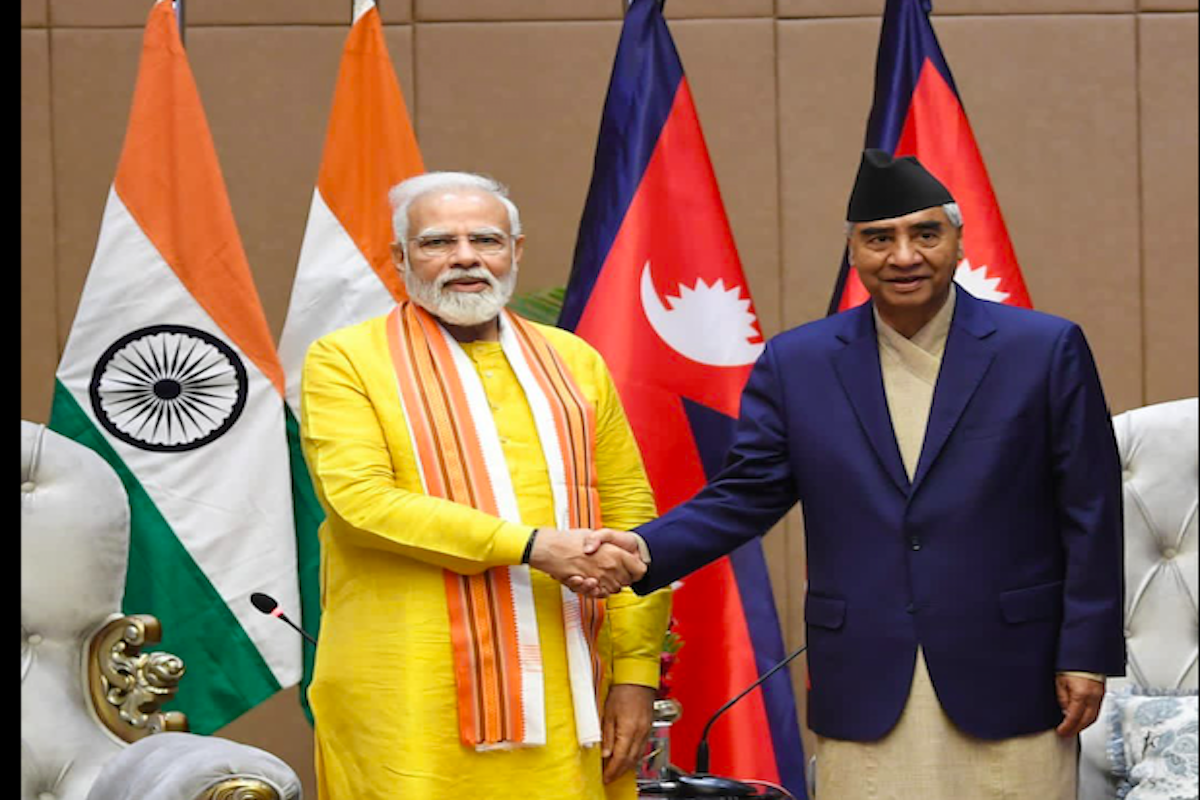PM Modi to lay foundation stone for Centre of Buddhist Culture and Heritage in Nepal’s Lumbini today
Lumbini is one of the holiest and most important places in Nepal as a result of which it was included in the list of World Heritage areas by UNESCO.
The two Prime Ministers also visited the Ashoka Pillar, which boasts the first epigraphic evidence of Lumbini being the birthplace of Buddha.

After a series of hiccups in bilateral relations, notably the border blockade and Nepal’s refusal to accept India’s aid package in the wake of the earthquake, an earnest effort was initiated to mend fences during the Prime Minister’s visit to the neighbouring country on Monday. There was an element of pregnant symbolism in the fact that Mr Narendra Modi travelled to Lumbini (the birthplace of Buddha) from Kushinagar ~ no less associated with the saint ~ in Uttar Pradesh in a helicopter. The celebration of Buddha Jayanti by Mr Modi and his Nepalese counterpart, Sher Bahadur Deuba, can be reckoned to be famously apt. He has above all made an effort to settle the controversy that has shrouded Buddha’s birthplace for centuries, indeed dating back to the history of ancient India.
The two Prime Ministers also visited the Ashoka Pillar, which boasts the first epigraphic evidence of Lumbini being the birthplace of Buddha. No less critical in the bilateral construct was that the two leaders participated in the shilanyas ceremony in Lumbini for what has been called the India International Centre for Buddhist Culture and Heritage. The Prime Minister’s visit has given an impetus to the cultural ties between India and Nepal. The visit to Lumbini is particularly significant as Mr Modi had expressed a desire to undertake the historic journey when he first visited Nepal in 2014. In course of the bilateral meetings, Mr Modi and Mr Deuba agreed in principle to establish “sister city relations” between Lumbini and Kushinagar ~ another holy site of Buddhism.
Advertisement
Furthermore, it has been acknowledged that the Buddhist heritage is shared by both countries. Hence perhaps Mr Modi’s somewhat euphoric parallel to the effect that India-Nepal ties are as “unshakeable as the Himalayas”. Both Prime Ministers have underlined the forward movement in what they call “power sector cooperation”. Mr Deuba has invited Indian companies to undertake the development of the West Seti hydropower project. The two leaders have also agreed to further expand educational and cultural exchanges to bring the people of the two countries closer.
Advertisement
As regards the India-Nepal border, there was no indication from either side whether the contentious issue was figured in the Modi-Deuba talks. Delhi maintains there are existing mechanisms for addressing this question, a point that was iterated by the foreign secretary, Vinay Mohan Kwatra, during his briefing last week ahead of Mr Modi’s visit The inherently contentious border issue was arguably best left untouched though Nepal has often nudged closer to China, as it did during the blockade. On closer reflection, the Prime Minister’s visit to Nepal has attempted to buttress the cultural and profoundly religious bonding between the two neighbours, dating back centuries and finding resonance in Buddha’s birthplace. It is fervently to be hoped that the controversy over Lumbini, which has impinged on bilateral relations, will now be set to rest.
Advertisement